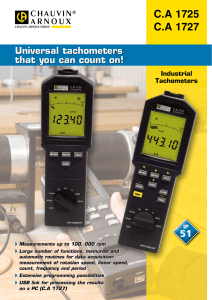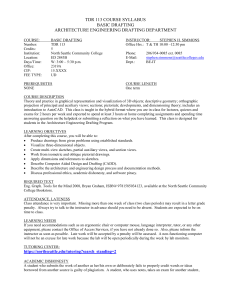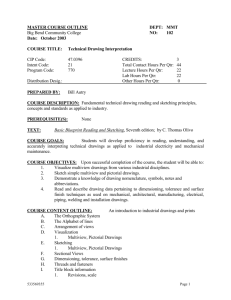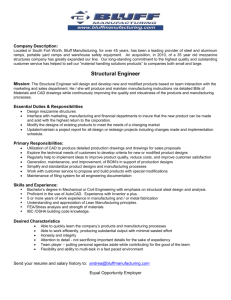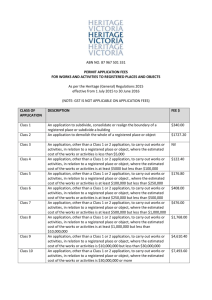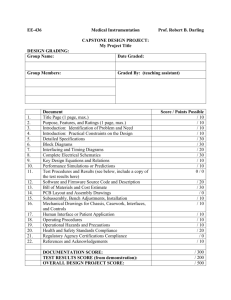ADVANCED DRAFTING TECHNIQUES
advertisement
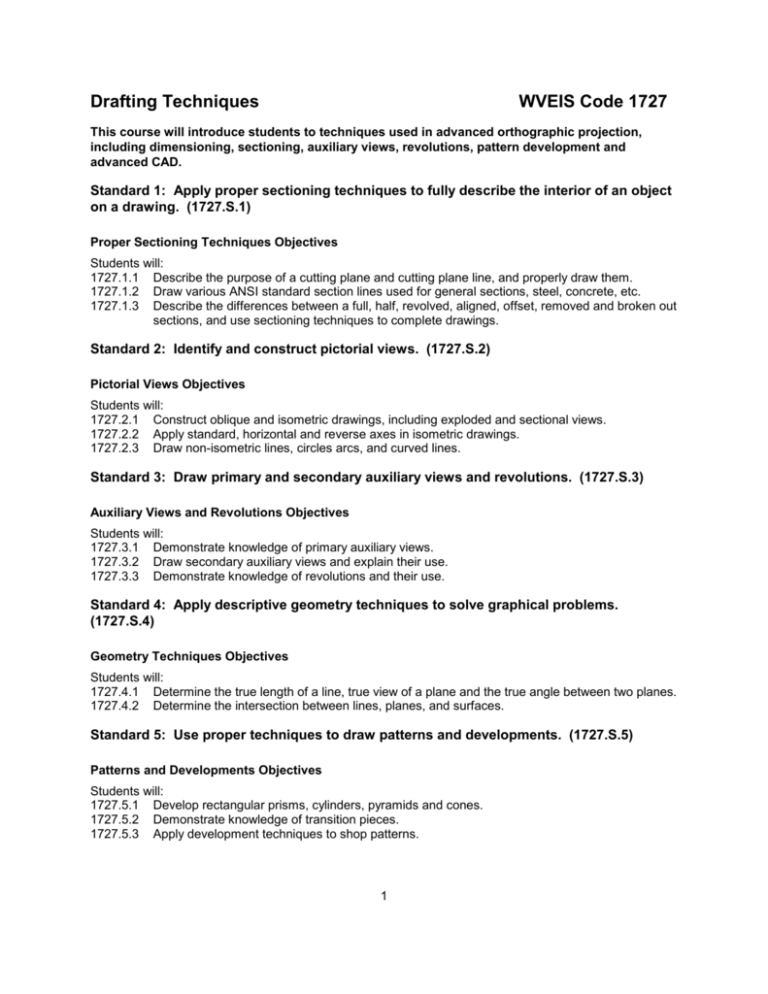
Drafting Techniques WVEIS Code 1727 This course will introduce students to techniques used in advanced orthographic projection, including dimensioning, sectioning, auxiliary views, revolutions, pattern development and advanced CAD. Standard 1: Apply proper sectioning techniques to fully describe the interior of an object on a drawing. (1727.S.1) Proper Sectioning Techniques Objectives Students will: 1727.1.1 Describe the purpose of a cutting plane and cutting plane line, and properly draw them. 1727.1.2 Draw various ANSI standard section lines used for general sections, steel, concrete, etc. 1727.1.3 Describe the differences between a full, half, revolved, aligned, offset, removed and broken out sections, and use sectioning techniques to complete drawings. Standard 2: Identify and construct pictorial views. (1727.S.2) Pictorial Views Objectives Students will: 1727.2.1 Construct oblique and isometric drawings, including exploded and sectional views. 1727.2.2 Apply standard, horizontal and reverse axes in isometric drawings. 1727.2.3 Draw non-isometric lines, circles arcs, and curved lines. Standard 3: Draw primary and secondary auxiliary views and revolutions. (1727.S.3) Auxiliary Views and Revolutions Objectives Students will: 1727.3.1 Demonstrate knowledge of primary auxiliary views. 1727.3.2 Draw secondary auxiliary views and explain their use. 1727.3.3 Demonstrate knowledge of revolutions and their use. Standard 4: Apply descriptive geometry techniques to solve graphical problems. (1727.S.4) Geometry Techniques Objectives Students will: 1727.4.1 Determine the true length of a line, true view of a plane and the true angle between two planes. 1727.4.2 Determine the intersection between lines, planes, and surfaces. Standard 5: Use proper techniques to draw patterns and developments. (1727.S.5) Patterns and Developments Objectives Students will: 1727.5.1 Develop rectangular prisms, cylinders, pyramids and cones. 1727.5.2 Demonstrate knowledge of transition pieces. 1727.5.3 Apply development techniques to shop patterns. 1 Standard 6: Apply the rules of dimensioning to dimension drawings, using architectural, engineering and metric measurements. (1727.S.6) Rules of Dimensioning Objectives Students will: 1727.6.1 Layout, measure and construct lines with the architectural, engineering and metric scales. 1727.6.2 Describe and apply unidirectional and aligned systems of dimensioning. 1727.6.3 Apply standard dimensioning techniques for a hole, countersink, counter bore and knurling. 1727.6.4 Properly dimension axonometric drawings. Standard 7: Use computer assisted drafting to produce drawings, demonstrating the ability to customize a CAD system. (1727.S.7) Computer Assisted Drafting Objectives Students will: 1727.7.1 Create and use various prototype drawings using custom developed line types, hatch patterns and text styles. 1727.7.2 Modify CAD menu to perform additional and/or new operations. 1727.7.3 Demonstrate the ability to modify operating system files to facilitate CAD operations and load and run a lisp routine.
